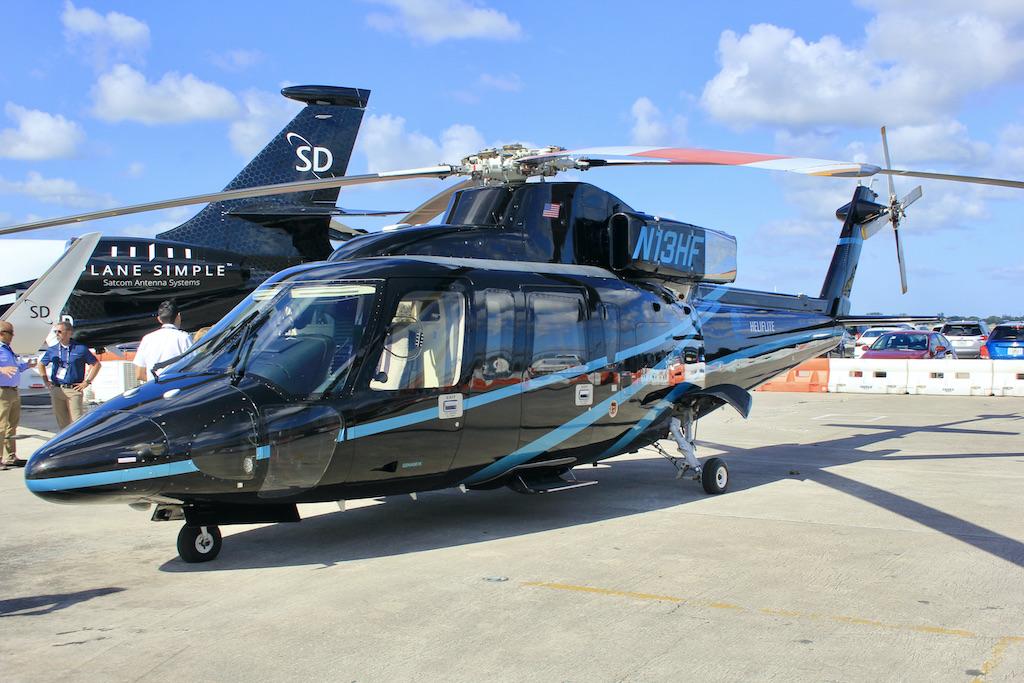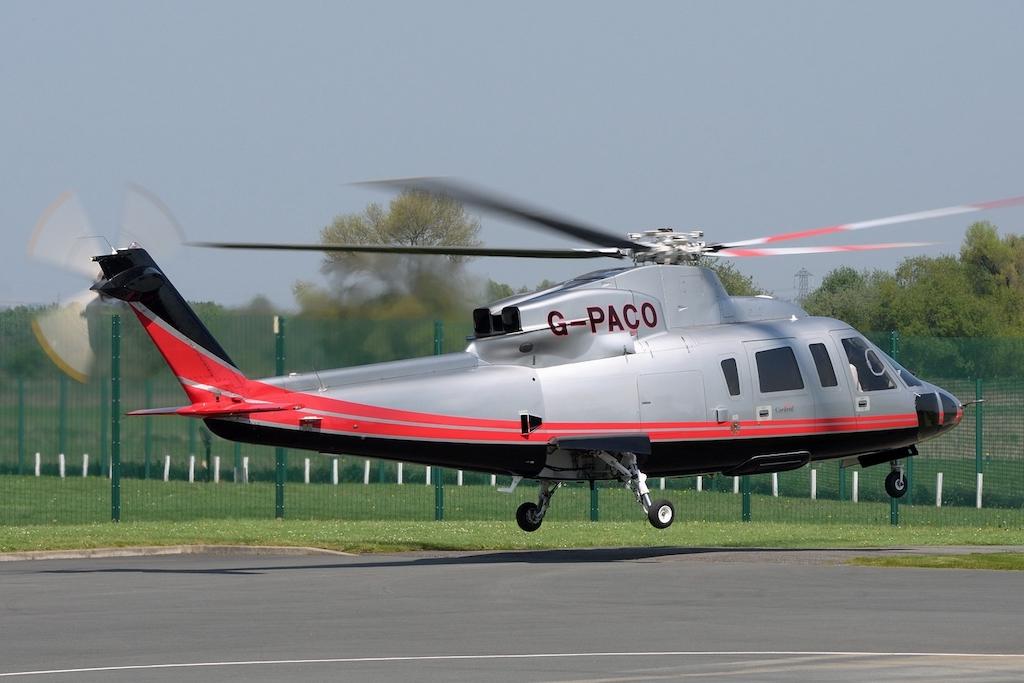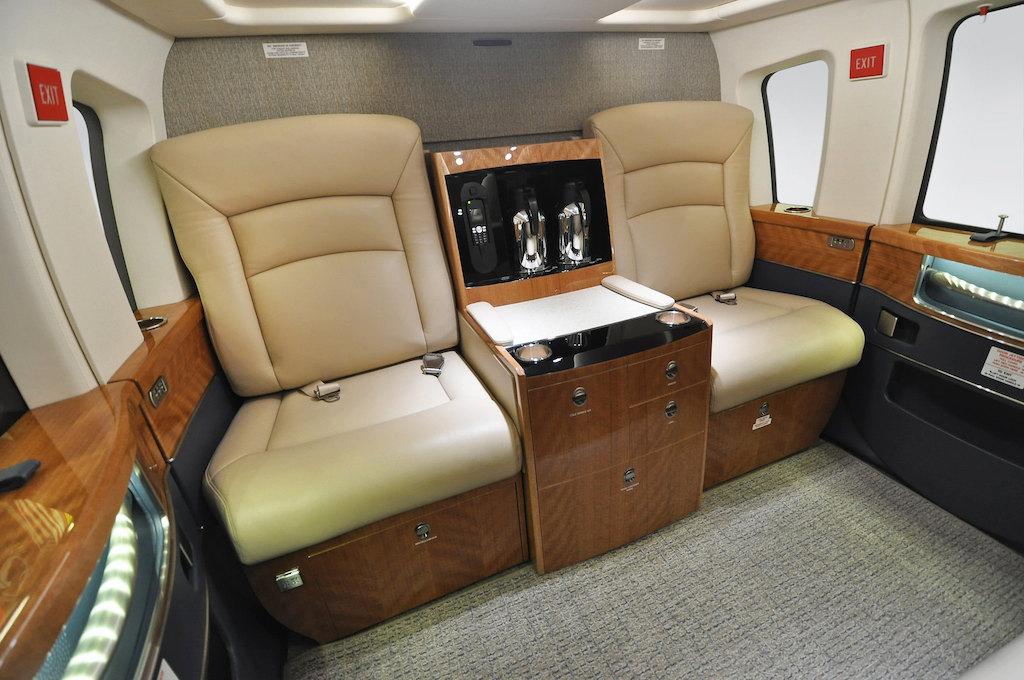
Named after the American bicentennial in 1976, the Sikorsky S-76 medium helicopter first flew in March 1977 from the manufacturer’s development flight-test center in West Palm Beach, Florida, and has been produced in A-through-D variants to the present day. The latest D-model achieved FAA type certification in October 2012.
Sikorsky Aircraft, now part of Lockheed Martin, says it has delivered more than 875 S-76s worldwide. The 12-passenger, twin-turbine workhorse was built originally as a personnel and equipment transport for the offshore oil and gas industry, and Sikorsky reports that 65% of flight hours have been dedicated to that mission. Designed with four-bladed main- and tail rotors and retractable landing gear, the S-76 is also used for search and rescue, helicopter air ambulance and executive/VIP transport.
The Aviation Week Fleet Discovery database counts a worldwide fleet of 505 S-76A-D models as follows: S-76A (56); S-76B/C (314 in service, 58 in storage, 4 in possession of non-operators); S-76D (67 in service, 4 in storage, 2 in possession of non-operators).
Worldwide Operators

Among the larger operators, Lider Taxi Aero of Brazil has 14 S-76B/C models, Sonair of Angola 11 and PHI Aviation 10. The Japan Coast Guard operates 12 S-76Ds (and three C models), and China Rescue and Salvage has eight D models.
The factory-new list price of a 2011 S-76C++ was $11.6 million, according to the Aircraft Bluebook.
In February 2022, there were around 35-40 models of all variants for sale both on and off-market, according to Hong Kong-based Asian Sky Group. Asking prices ranged from $500,000 to $6 million depending on the variant, mission profile and configuration.
“The EC155 B1 [Airbus Helicopters H155] and [Leonardo Helicopters] AW139 have always been the main competitors with the S76s,” said Nadav Kessler, Asian Sky Group managing director. “For utility and transportation operations, the AW139 is a stronger competitor given its performance characteristics, but in the VIP and corporate space, the EC155B1 is a comparable candidate largely due to its price point being more on par with the S-76.”
Engine Changes

Over its nearly half-a-century in service, the S-76 has been fitted with increasingly more powerful and efficient engines across variants. The original S-76A was powered by 650-shp Allison 250-C30 turboshafts. The S-76B, first delivered in 1985, came with more powerful (960 shp) Pratt & Whitney Canada PT6B-36A turboshafts, a strengthened transmission and a longer airframe.
The S-76A+ in 1986 featured increased performance and reliability Turbomeca Arriel 1S engines; the S-76A++ (1987), Turbomeca Arriel 1S1 engines; the S-76C (1991) Turbomeca Arriel 2S engines, with S-76B transmission and airframe improvements; the S-76C+ (1996) Turbomeca Arriel 2S1 engines; and the S-76C++ (2006), Turbomeca Arriel 2S2 engines with full authority digital engine control.
The latest S-76D, powered by 1050-shp P&WC PW210S engines, has a range of 398 nm at its long-range cruise speed of 152 kts at 4,000 ft. in standard-day ISA conditions, according to Sikorsky. Maximum takeoff gross weight is 11,875 lb., with an internal useful load of 4,912 lb.
In addition to more powerful engines, the S-76D comes with the Thales TopDeck avionics suite (replacing Honeywell avionics), Honeywell Enhanced Ground Proximity Warning System, BendixKing TCAS, Goodrich Vigor health and usage monitoring system, composite main rotor blades and rotor brake.
“Pilots appreciate the machine’s excellent balance between aircraft autonomy and human action, the interaction is clear and the workload is suitable for the particular mission they are flying,” Kessler said. “Operators praise the aircraft’s reliability, resilience, versatility and maintenance stability. Sikorsky’s maintenance systems enable straightforward planning which is also a result of parts availability, commonality and cost stability.”
VIP Interior

S-76D cabin options include a VIP interior with seating for five to eight passengers. There are three cabin windows on both sides of the fuselage, including a large middle transparency. The passenger cabin area is 50 sq-ft., with volume of 204 cubic ft. The baggage compartment volume is 38 cubic ft. The passenger door is 52 in. high and 37.5 in. wide.
“Passengers appreciate the aircraft safety track record,” Kessler said. “The flight itself is smooth and quiet, partially due to the aircraft’s vibration control systems which add to passengers’ sense of stability and control.”
Main S-76 maintenance intervals are 100, 300, 600, 900 and 1,500 hours, with 12, 24, 36 and 48-month inspections. “Even the major checks such as the 4-year and 1,500-hr. inspections are relatively short to perform in comparison with other major inspections on the competing aircraft variants,” said Kessler.
Stratford, Connecticut-based Sikorsky reports that it has 22 authorized service centers and more than 100 customer service and field service representatives for the S-76 and larger S-92 helicopters worldwide.
BCA welcomes comment and insight from aircraft dealers and brokers for its monthly 20/Twenty pre-owned aircraft market feature. The focus aircraft for March 2022 is the Gulfstream G650. To participate, contact [email protected].





